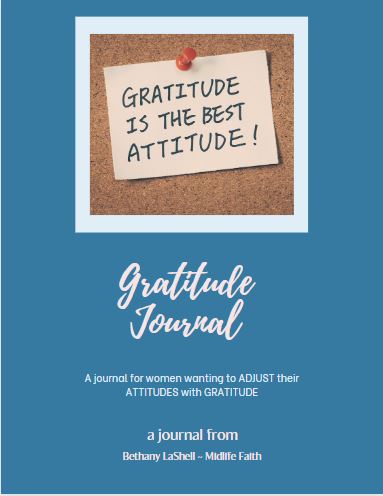I’ve written a lot about how to organize a school room and how our school room is arranged (and rearranged). However, I’ve gotten more than one request to share how to organize a homeschool without a designated room.
One reader sent in an extensive list of specific questions she wanted answered in relation to homeschooling without a homeschool room. I’ll go through it one section at a time so all y’all can benefit.
1. Question: “For now, our teen does his schoolwork at a desk in his room and keeps his books in there with him–unless he needs to use the computer, which is in the basement. He used to do school out at the kitchen counter, until little sister came along and it was not quiet out there! ;)”
Solution: Having older, more independent learners do their schoolwork in their own bedrooms is a great solution! Obviously, you’ll still have to do some monitoring and be available for some teaching/tutoring/discussion times, but those times can happen on the couch, in your teen’s room (unless it’s a fire hazard like my teen’s room is!), or at the kitchen table. If at all possible, make sure your teen/preteen has some sort of desk. It doesn’t have to be fancy or new, but she needs a solid surface to spread out her books and papers. Again, if your child is just keeping her essential books in her bedroom, a small, cheap bookshelf should be sufficient. Our goal should be to help our children become more independent learners each year; that makes having a desk in the bedroom quite feasible.
2. Question: “Little sister does school at the kitchen counter, unless we are reading together on the couch.”
Solution: This works fine for younger kids who need mom’s input and presence for most or all of their schoolwork. We loved the couch for read-aloud times, too :-).
More solutions: I can already see those hands raising and the question of what to do with multiple learners around the kitchen table. Yes, I know they kick each other under the table and encroach on each other’s space. I know that sometimes just looking at a sibling can be the cause for World War 3. So, I propose that for those times, you give each child his or her own little office/school space using project boards. For the highly distractable learner, leave it plain. For those who need reminders or are working on learning lists of things, try adapting these or these office/desk organizers.
3. Question: “I have some plastic drawers sitting out in the living room that we use as work boxes for her, and (when I am organized!) I will put her assignments in her drawers and she works her way through them.
 Solution: Plastic drawers work great for kids’ supplies. If you’re not familiar with the work box concept, just Google it and you’ll find more information than you need! Another idea is to designate and label each drawer for a different subject and/or type of supply. For instance, in the math drawer, you might put her workbook, manipulatives, a ruler, and whatever else you need for math this year. In the art drawer, you can have whatever art curriculum you’ve chosen along with whatever art supplies are normally used. Another drawer could be a reference drawer with an age-appropriate dictionary, thesaurus, etc. Make the drawers fit what you need.
Solution: Plastic drawers work great for kids’ supplies. If you’re not familiar with the work box concept, just Google it and you’ll find more information than you need! Another idea is to designate and label each drawer for a different subject and/or type of supply. For instance, in the math drawer, you might put her workbook, manipulatives, a ruler, and whatever else you need for math this year. In the art drawer, you can have whatever art curriculum you’ve chosen along with whatever art supplies are normally used. Another drawer could be a reference drawer with an age-appropriate dictionary, thesaurus, etc. Make the drawers fit what you need.
More solutions: If you have room for a small, 3-shelf bookshelf, is to put it as close as you can to where you normally do most of your schooling. Then fill the shelves as needed with only the books that you’re currently using and bins for all of the other stuff (art supplies, pencils, paper, etc.).
If you have more supplies than you have space, or have supplies that keep getting lost from their containers, check out this post on my top 10 organizing tools, containers, and craft containers.
3. Question: “My teacher’s books and things for her I keep in one of my kitchen cupboards, and on a cart sitting next to my kitchen desk. Other school materials that we are not currently using are stored in tubs in the basement, labeled math, reading, etc.”
Solution: While there’s nothing wrong with what you’ve got going here, you might want to streamline it a bit. I would recommend keeping all of your teacher’s books in one spot, if possible–either a cupboard or on the shelf. Or, you could keep all of your younger child’s things on the shelf and all of your older child’s things in the cupboard (or vice versa).
More solutions: Labeled tubs in the basement are fine for unused school materials. Here’s a thought, though, to take it a step further. In addition to the generic labels (math, reading, etc.), tape a list to the top of each bin with its exact contents by title, author/publisher, and grade level. You might also want to print out an extra list and store all the lists in your master mom binder (instructions on how to set one of those up coming in a few weeks). That way, you’ll know at a glance what’s available, even if it’s out of sight.
I think part of my problem is that our things are so scattered around the house. Would LOVE to have one room dedicated solely to school, but to do that it would have to be in the basement, and during the winter the basement is COLD. I also find that I usually need to be in the kitchen–working on dishes, making food, paying bills at my desk, etc. So when I am not actually teaching our daughter, I am trying to get some of those chores done while she works on her assignments. Soooo. Even if I DID turn the basement into our school room, and use space heaters down there (which we do), I would still find myself needing to do chores in the kitchen.
Q4U from this reader: “I would love to hear how others are handling this problem.” Let’s see your suggestions!
A while ago, I did feature another reader’s space. If you missed, you can read that post here.






Leave a comment